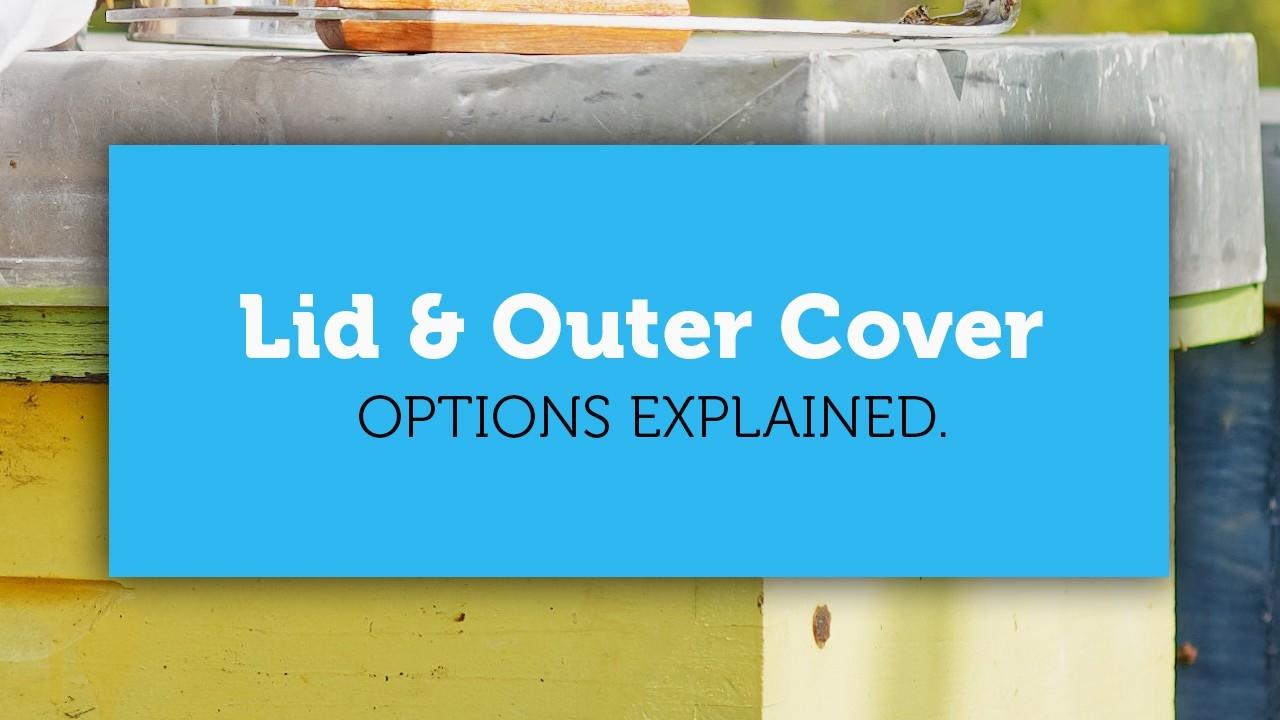
Migratory Lid Vs. Telescoping Outer Cover
Nov 03, 2020The two primary lid styles you're going to come across for the Langstroth style beehive are the telescoping outer cover and the migratory lid.
Telescoping Outer Cover
The telescoping outer cover is the recommended lid for most beekeepers. It is the name used for Langstroth beehive lids that extend over the sides of the beehive.
It will protect your hive from the elements like rain and snow and is the best option if you live in an area that gets a cold winter. It will last longer than the migratory lid, but also costs more.
Many beekeepers will use an inner cover under the outer cover. This is not a mandatory piece of equipment, but will make it easier to take the outer cover off, especially when the bees have glued the lid down with propolis, a super sticky material bees make from plant sap which gets only stickier when its hot out. Learn more about the outer cover here.
Migratory Lid
The migratory lid is the style beehive lid that is a flat piece of wood. It lays on top of the beehive and has two pieces on either end so that you can easily pick the lid up.
It is often used in warmer climates that do not get a frost, but gets it's name because it is used by apiaries that move their beehives. Since this lid does not extend over the sides of the beehive, the beehive does not take up as much space and allows the beekeepers to stack 4 beehives per palette.
The migratory lid is cheaper, takes up less space and is easy to make. However, if you get a lot of rain or live in an area with cold winters, the telescoping outer cover is the recommended lid for you.
How to Make a Lid in 5 Minutes
If you need a lid ASAP and don't have one, in a pinch I've gone to Home Depot and had them cut down a large sheet of 3/4" non pressure treated plywood. You get about 8 pieces from this sheet. It cost me $40 in total. I used some as lids and some as bottom boards. The lids do warp a bit, but if its warm out, this is a good thing because it allows for an upper entrance.
I wouldn't keep these on a beehive long term, but in a pinch, say you caught a swarm or are splitting hives, they work really well.
Watch the video below for more information about these lids and how they're used.
Want to learn more about the parts of a hive? Check out our other articles:
- 5 Reasons Why I recommend a Langstroth style hive for every beginner beekeeper.
- Langstroth Frames & Foundation Explained
- The Purpose to an Inner Cover.
- Deep, medium, shallow. The boxes of a beehive explained.
Want to learn more about beekeeping?
Join our newsletter for blog updates, beekeeping videos, sales and contests.





